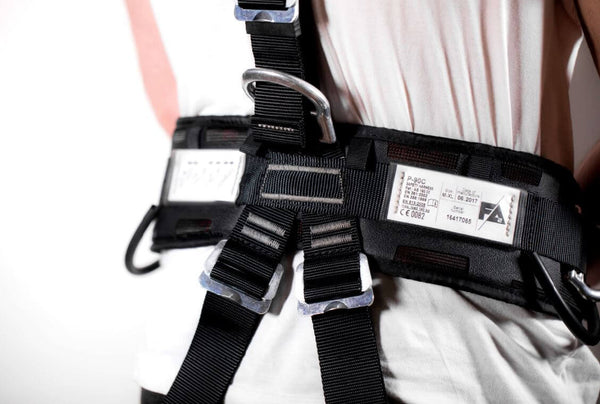
Shipping calculator
Payment methods
Product details
5-point full-body safety harness, compliant with safety harness standards
A full-body safety harness is a body support device that distributes fall arrest forces across the shoulders, thighs, and pelvis. According to EN361, a full-body harness is the only acceptable body holding device that can be used in a fall arrest system.
Used for fall arrest, fall restraint and work positioning, FA2 full-body harness provides comfort, protection, ease-of-use and flexibility to do what needs to be done on the job site. When used in a work positioning system, this safety harness allows you to perform delicate tasks with two hands and the upper body free while maintaining stability at an elevated height.
Fast and International Delivery! For any inquiries, please contact us via Chat.
Safety Harness & Lanyard Blog - Full Body Harness Inspection Checklist
FEATURES:
- ''A''Tag: The fall arrest system must be connected only to the attaching points of a harness marked by the capital letter ''A''
- Padded waist and leg loops: Low profile enough to avoid fouling on ropes/access equipment etc.
-
Location of buckles:
1. At the rear between the dorsal section and waist for easy height adjustment
2. At the thigh for tight-fitting
3. At the shoulder for padding placement
4. Between the leg loops and waist - The leg loops: Feature a quick release, double safety buckles which cannot accidentally come undone when slack or under tension
- The waistband: Fitted with accessory loops for the attachment of tools
- FA2 Syborg twist-lock carabiner: Used to fasten the harness
SPECIFICATIONS:
-
Material: Polyester Webbings
-
Standards:
CE0082
EN361:2002, as a full-body harness. (With an “A” tag at each attachment point)
EN358:1999, as a working positioning belt
EN813:2008, as a sit harness. Max. Load of the seat harness is 140kg
How to Wear Safety Harness?

- Take the harness by the shoulder straps. Disconnect shoulder straps from connecting hook [Y]
- Move the straps over the head. Taking the harness by the belt, put them on over the feet.
- Connect the shoulder straps to connecting hook [Y]
- Adjust the belt strap. Necessarily protect free ends of the straps with the loops. Adjust the shoulder straps
- Fasten and adjust the thigh straps. Necessarily protect free ends of the straps with the loops
FAQs about safety harnesses:
1. How often do safety harnesses need to be inspected?
The British Standard suggests inspecting personal protective equipment at least every 12 months while some manufacturers recommend a more frequent inspection, especially when the equipment is used in a harsh environment. The inspection has to be carried out by competent personnel. HSE's guideline document includes examples of defects and damage for reference. To learn more about how to inspect a safety harness, please refer to the Safety Harness Inspection Checklist
2. How to wash a safety harness?
• Wash harnesses in lukewarm soapy water (ph-neutral, 30 °C maximum), then rinse thoroughly with fresh tap water. (✓ Household Face & Body Soap; ✘Laundry Detergent, ✘Solvents, ✘Stain Removers, ✘Degreasers)
• Hang harnesses on a line to dry.
• You can wash your harness in a washing machine. Choose the 30 °C delicate synthetic setting, without a spin cycle. Wash the harness inside a thick cloth bag

Safety Harnesses • Safety Lanyards • Safety Helmets




